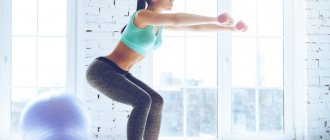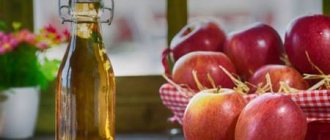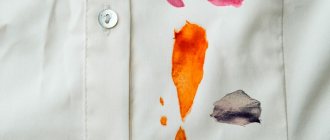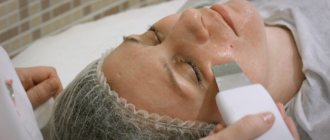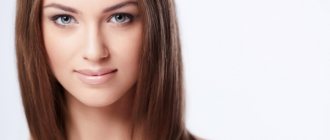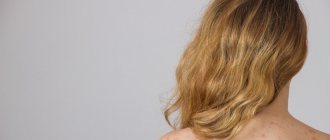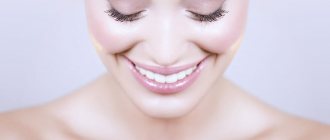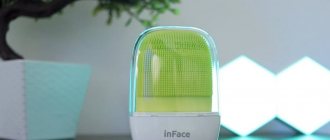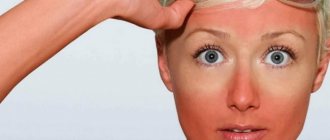Perfectly smooth skin without pimples and acne is the dream of every woman. Because skin imperfections can bother both young teenagers and mature ladies.
However, getting rid of them can be very problematic, as well as achieving a long-term effect.
An expert in the online publication BelNovosti, a specialist in the field of beauty and makeup, Lesya Introvert, told how to deal with pimples.
Always a relevant and burning topic. Every year there are more and more new studies of the problem and new ways to solve it. To understand which solution is right for you, you need to understand the root cause.
The condition of the skin can be influenced by both external and internal factors. Today we will look at the most common ones.
Let's start with external factors :
Why is squeezing pimples bad for your skin?
There are 5 main threats that can result from self-squeezing pimples on the skin of the face.
Threat of spreading infection to the sides
Rosacea or, as doctors and cosmetologists call them, rosacea, is usually a recurrent disease that is chronic in nature. It is characterized by the expansion of capillaries and small vessels, as well as the subsequent formation of rash elements - papules and pustules.
The name of the disease from Latin translates roughly as “like a rose” and describes the essence. Rosacea is more common in women over 25-30 years of age, but can also occur in boys or men.
The disease is most common among representatives of the Caucasian race, especially those with the first or second skin phototype, that is, its light shade.
Important: do not confuse rosacea with vulgar acne, which is based on inflammation of the sebaceous glands.
The exact mechanism of development of rosacea is still not clear, but the following possible causes of rosacea are identified:
- increased activity of skin mites of the genus Demodex;
- exposure to ultraviolet rays, frequent sun exposure;
- hypothermia of the skin or, on the contrary, thermal effects;
- frequently performed aggressive procedures, for example, medium or deep chemical or mechanical peels;
- unhealthy diet and some eating habits, for example, eating excessively hot or spicy foods, spices, seasonings (such food causes vasodilation and a rush of blood to the facial area);
- allergic reactions;
- associated dermatological diseases: eczema, atopic dermatitis, seborrhea, psoriasis and others;
- disorders affecting the circulatory system or the autonomic nervous system (it is believed that a rush of blood to the face may be due to disorders of the coagulation mechanism or failures in the processes of nervous regulation);
- some infectious skin lesions;
- improper skin care, namely washing with hot water, as well as the use of highly abrasive scrubs or products containing acids and other aggressive components (all this has a local irritating effect);
- genetic factor (it is believed that the likelihood of developing rosacea increases if the disease in question was present in one of the parents or both);
- bad habits: smoking, alcohol abuse;
- work in unfavorable conditions, for example, in hot shops, in hot rooms;
- endocrine disorders;
- hormonal disorders, gynecological diseases;
- some scientists believe that diseases of the gastrointestinal tract, in particular gastritis, play a certain role in the development of rosacea (the negative effect is caused by exposure to the bacteria Helicobacter pylori);
- decreased immunity, weakened body defenses;
- frequent overwork or stress.
Causes of red acne
Not all people with oily skin develop pustular lesions. Red acne with a purulent head in the center appears due to a combination of several factors.
Puberty gives the first impetus to the appearance of problem skin. An excess of the male hormone testosterone is formed in the blood - it stimulates the body of adolescents (both boys and girls) to increased growth, and also activates the activity of the sebaceous glands. Acne at a young age is a transient phenomenon.
But some adults, whose age has exceeded 30 years, still have acne on their faces. In this case, the reasons must be sought in the disruption of the functioning of other systems and organs:
- digestive tract;
- nervous system;
- endocrine organs (in women - ovaries);
- for helminthiases (helminthic infestations);
- for rhinitis and diseases of the paranasal cavities;
- with long-term use of glucocorticosteroids, bromides and vitamins B6 and B12;
- with alcohol abuse;
The connection between the condition of the skin and the disease of a distant organ is not always visible. Only a qualified specialist can identify it.
For example, the connection between the nervous system and skin conditions may be questionable. But a calm, balanced, successful teenager usually has fewer problems with acne than his notorious classmate (even an excellent student!) with uneven relationships in family and school.
The state of the digestive organs also indirectly affects the “purity” of the skin. Dysbacteriosis itself is not associated with the sebaceous glands, but it causes a decrease in immunity, giving room for the activity of pyogenic microbial and fungal flora on the skin.
Helminth infections and alcoholism are also involved in decreased immunity.
The cause of the formation of red acne may be demodicosis, an infection with a skin mite, which you can learn more about here.
Causes of acne
Before developing a strategy for how to cure acne on your face quickly, you need to find out the reasons for their appearance. Causes of acne on the face are what worries modern youth.
We would like to list ten main reasons:
- Changes in hormonal levels. Most often, this happens during adolescence.
- An increase in the level of steroid hormones in the fair sex before the onset of menstruation.
- A disease called hyperkeratosis, better known as the growth and thickening of the outermost layer of skin. It can be caused by occupational poisoning, skin friction and so on.
- A violation of fat metabolism, when excess lipids begin to form.
- Gastrointestinal diseases and, of course, unhealthy diet.
- Mental disorders, for example, stress, overexertion.
- Using cosmetics that are not suitable for your skin type, as a result, inflammation develops, which leads to acne.
- Climatic conditions, excessively dry, humid, cold or hot weather.
- Using a rough scrub or performing facial cleansing procedures when you have acne on your face can only make the situation worse.
- Touching the skin with your hands, dirt gets onto your skin with your hands.
Now that we have become familiar with the main causes of acne, let's look at how to get rid of acne on your face. The most important rule when fighting acne is: do not squeeze pimples under any circumstances.
If you squeeze pimples, you can permanently leave marks on your face or pink spots from acne. Only a professional cosmetologist can remove such skin imperfections without leaving stains and marks, and he should be entrusted with such procedures.
There are many reasons for the appearance of acne.
There are many causes of acne in adolescence and in adult men and women.
These include:
- hormonal changes and disorders;
- poor environmental conditions;
- poor lifestyle and nutrition;
- lack of time to properly care for your skin;
- ignorance or neglect of preventive and hygienic norms and rules.
There are many different remedies to combat acne on the face, but before starting treatment, it is important to determine the very cause of their appearance, otherwise the treatment may be useless.
Experiences and frequent stress have a significant impact on the appearance of acne. Nowadays it is very difficult to avoid them, because we encounter them all the time.
Our body must somehow react to all this, so in times of stress it secretes even more sebaceous glands, which cause clogging of the pores on the skin, resulting in acne.
The causes of acne can be very diverse. In practice, acne appears more often in boys or girls during puberty.
During this period, the body begins the process of producing large amounts of sex hormones. As a result of their activity, the activity of the fat glands increases, as a result of which the pores can become clogged with produced sebum.
There are many causes of acne in adolescence and in adult men and women.
Pimples (acne, acne) are a serious disease of the hair follicles and sebaceous glands. The exact reasons for its development, unfortunately, are unknown. However, at the root of the problem is a decrease in the bactericidal effect of sebum secreted and, as a consequence, activation of the coccal flora.
The term "acne" has ancient Greek roots. It was derived from a word literally translated meaning “the culmination of the breaking of the skin.”
The causes of acne can be very diverse. In practice, acne appears more often in boys or girls during puberty.
During this period, the body begins the process of producing large amounts of sex hormones. As a result of their activity, the activity of the fat glands increases, as a result of which the pores can become clogged with produced sebum.
Causes of blackheads
The appearance of small foci of inflammation on the skin is caused by the sebaceous glands located in the skin next to each hair. Their mouth opens into the hair bursa to increase its elasticity. The skin, covered with a thin layer of secretion from these glands, is better protected from external factors than a dry surface.
But, on the other hand, excess fat contributes to the formation of an abscess. Some people are genetically programmed to have too much keratinization of the surface layer of the skin. Small scales of dead epidermis easily peel off and accumulate in the lumen of the pore, mixing with sebum.
A sebaceous plug appears, which when squeezed out looks like a long winding rod. On the surface of the skin, a clogged pore looks like a black dot - this is how the sebaceous mass changes color when oxidized in air. In addition to blackheads, small, poppy seed-sized, white dense millet grains often appear on the skin, these are the so-called whiteheads. They are formed if the outlet of the pore is narrowed or completely closed.
The presence of black and whiteheads (called comedones) is typical for oily skin with large pores.
Tests for acne
Upon external examination of the patient's skin, diagnosing acne is not very difficult for an experienced doctor. The main thing is to distinguish visually from similar diseases. Additional examinations and tests are prescribed not to diagnose the disease, but to find the cause and prescribe adequate treatment.
Which hormones are released during acne depends on the examination and examination by an endocrinologist.
Tests for acne need to be taken in order to find the cause of the disease.
It could be:
- LH (luteinizing);
- FSH (follicle stimulating);
- dehydrotestosterone (5-testosterone);
- 5-androstenidol;
- estradiol;
- free testosterone.
Any of these tests must be taken no later than 10 a.m. on an empty stomach; it is better for women to do this 5–7 days after the start of menstruation.
Upon external examination of the patient's skin, diagnosing acne is not very difficult for an experienced doctor. The main thing is to distinguish visually from similar diseases.
Additional examinations and tests are prescribed not to diagnose the disease, but to find the cause and prescribe adequate treatment.
Which hormones are released during acne depends on the examination and examination by an endocrinologist.
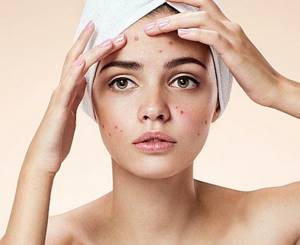
Any of these tests must be taken no later than 10 a.m. on an empty stomach; it is better for women to do this 5–7 days after the start of menstruation.
Effective acne cosmetics
Some drugs not only have a healing effect on the skin, but also mask skin defects:
- Intraskin anti-acne cream does an excellent job of correcting the appearance and cures acne in 30-50 days. Its targeted application successfully hides blackheads and small pimples.
- A good remedy for acne, Proactive tonic consists of benzene peroxide and natural extracts of chamomile and aloe. It has a healing effect and reliably hides skin defects on the body.
- Gel for inflamed skin “Fly away” from GREEN MAMA has good consumer reviews.
- Night cream for acne "Propeller" for spot use has conflicting reviews, but there are no particularly negative ones among them.
- The medicinal products of the cosmetics company Mary Kay have long proven themselves well; you can also rely on them if you need to urgently disguise problems.
- The “Clean Skin Active” acne roller gel is convenient to use. Its therapeutic effect does not appear immediately, but when used for 1-2 months, the skin is well cleansed.
Nuances of treatment at home
A dermatologist is primarily concerned with the condition of the skin. It will help determine the cause of the rash.
READ MORE: What food allergies look like in a baby: photos of babies, a child, symptoms in newborns
If there is a health problem, further examination and treatment will be required. If the cause is on the surface, then the treatment methods will be different.
Your doctor may recommend cosmetic facial cleansing treatments and medications to relieve inflammation and kill bacteria.
There are many medications that help both fight acne and prevent its further occurrence. These are various ointments, creams, lotions and solutions. Among them are the following effective means:
- salicylic ointment or lotion;
- iodine;
- Zenerite;
- Baziron;
- Skinoren.
They kill bacteria and dry out the skin. Along with these products, it is necessary to use a nourishing cream so that the treated areas do not peel off.
It has long been known that a solution of 1-2% salicylic acid is considered a good remedy in the fight against acne on the face and entire body. It has an antibacterial, drying and exfoliating effect.
This product is available to absolutely everyone, it is very cheap, and you can buy it at any pharmacy. It is necessary to wipe the skin of the face and body with this solution using a cotton pad, but this should be done no more than twice a day.
It would be right to make various moisturizing face masks, because salicylic acid dries out the skin very much. But masks should only be done when the acne is cured, otherwise it may become inflamed again.
Chamomile infusion is considered an excellent remedy for getting rid of acne. Chamomile flower has a number of healing properties; it can relieve inflammation and irritation from the skin.
The infusion is prepared as follows: chamomile flowers (they are sold in every pharmacy) are poured with boiling water and infused for 20 minutes. Using a cotton pad, apply warm compresses to the face, paying special attention to the forehead, nose and chin.
Such compresses can be done an infinite number of times a day.
So, 5-6 times can be considered the daily norm. Rubbing with ice from chamomile infusion is very beneficial for the skin. This will not only get rid of acne, but also tones the skin and makes it more elastic.
To begin with, you should remember one simple rule - under no circumstances, regardless of the importance of the upcoming date or meeting, should you squeeze out pimples, especially on the face.
Such procedures can only be performed by a qualified cosmetologist using special tools. And even in this case, possible risks of infection cannot be completely excluded.
When performing such a procedure on your own, there is a high probability of infection in the wound. The consequences in this case can be the most severe - scars from such squeezed pimples can remain on the surface of the face for life, in addition to this, new rashes may appear at the site of the squeeze, but the most terrible consequence can be considered blood poisoning.
At home, such health problems will be extremely difficult to cure.
Today, stores offer a great variety of products that help get rid of acne, the cost of which can vary from the lowest to incredibly high offers. All these remedies promise to help get rid of acne in almost a few hours.
However, as the famous advertising saying goes, not all home remedies are created equal.
- Recently, many people have begun to actively use toothpaste to fight acne. Unfortunately, this is not the best solution: do not forget that the paste is intended to cleanse one of the hardest parts of our body - teeth. The concentration of substances contained in it is too high, especially for sensitive skin, and can cause irritation and even an allergic reaction.
- You shouldn’t resort to lemon juice either. Despite the fact that it regulates the functioning of the sebaceous glands, citric acid acts too aggressively for inflamed skin! In addition, acid exposure to sunlight can lighten the skin and make its tone noticeably uneven.
- Never apply honey to inflamed areas of the skin: its sticky and dense texture can clog pores and cause new pimples to appear.
Let's go back to the beginning of the article and remember the unexpected “surprise” before an important event. The situation is indeed unpleasant, but quite fixable, because it is much easier and more effective to fight acne at the initial stage of development. To learn how to quickly relieve inflammation, watch the video.
Live experiment right in the studio
And in conclusion, let me remind you once again that it is possible to treat skin inflammations with home remedies only if they are not of a regular nature. For serious skin diseases (such as acne), in no case should you get carried away with self-medication, but hurry up and visit the doctor.
To begin with, you should remember one simple rule - under no circumstances, regardless of the importance of the upcoming date or meeting, should you squeeze out pimples, especially on the face. Such procedures can only be performed by a qualified cosmetologist using special tools.
And even in this case, possible risks of infection cannot be completely excluded.
When performing such a procedure on your own, there is a high probability of infection in the wound. The consequences in this case can be the most severe - scars from such squeezed pimples can remain on the surface of the face for life, in addition to this, new rashes may appear at the site of the squeeze, but the most terrible consequence can be considered blood poisoning.
At home, such health problems will be extremely difficult to cure.
Today, stores offer a great variety of products that help get rid of acne, the cost of which can vary from the lowest to incredibly high offers. All these remedies promise to help get rid of acne in almost a few hours.
Symptomatic manifestations
By some signs you can determine that it is a subcutaneous pimple and not something else:
- Internal acne on the face and body can be identified visually; they can also be felt if they have not yet matured enough to rise above the surface of the skin.
- If you press lightly on internal pimples on the face and body, pain will appear.
- For a long time, acne may not bother you in any way (except for aesthetic discomfort). An internal pimple on the face can remain unchanged for a long time and not fester.
- If white subcutaneous pimples on the body or face are caused by demodex (subcutaneous mite), then burning and itching appears, in addition, the body becomes covered with spots, and the skin dries out and peels off.
Under no circumstances should you get rid of a subcutaneous pimple by picking it or trying to squeeze it out! The inflammatory process will intensify, and the acne itself will increase in size even more. If you open an acne, the wound will take a very long time to heal, and after healing, an ugly red mark will remain on the skin, which cannot be completely removed.
Read also: Cosmetology: how to remove acne
Fighting acne with medications
Today, our pharmacies are overflowing with acne medications, including tablets and vitamins, powders and powders, ointments and gels, intramuscular and even intravenous medications, strong antibiotics and gentle medications.
They should be used very carefully, preferably after consultation with a dermatology specialist, otherwise the medicine may not help, and sometimes even harm.
Medicinal effects on acne
Skin care
For daily care of inflamed skin, contrast washing with neutral solid soap such as “Children's” and subsequent facial treatment with alcohol solutions were previously recommended. By now, the futility of such treatment is obvious. With it, the effect is only on the surface layer of the skin, drying it out. The entrance to the pores closes, clogging pathogenic microorganisms in the depths. They will still support the inflammatory process. Excessive drying also stimulates increased secretion of sebum by the glands.
Cleansing the skin with a special mild water-soluble product should be very gentle. The specific choice of drug is best made together with your doctor, taking into account all individual circumstances.
Removing dead skin cells from the surface of the skin (exfoliation) prevents the formation of new comedones. Skin flakes can be removed mechanically with a scrub or by applying exfoliants (fruit acids or salicylic acid). After exfoliation of dry particles, the skin is vulnerable to sunlight; when going out into the open air, you need to protect your face with sunscreen.
It is useful to use the drug Benzene peroxide 2.5% as an antibacterial and whitening agent for age spots. It is an active component of the anti-acne gel Baziron.
For antiseptic skin treatment, cosmetologists recommend the proven, inexpensive acne remedy Chlorhexidine, which can be purchased in various forms: cream, gel, bactericidal patch, solution. It can be used to cleanse your face before using any acne cream or gel.
Miramistin is a foreign complete analogue of Chlorhexidine, which has the same properties.
Fighting acne with folk remedies
Clay face masks are very beneficial for the skin and effective in fighting acne. Clay can be purchased at any pharmacy, as well as cosmetic store.
The mask is very easy to prepare; just dilute the clay with warm water (preferably boiled) to the consistency of thick sour cream. The clay must be applied in a thin layer and after 15-20 minutes, rinse with warm running water.
A clay mask can not only cleanse the skin, but also draw out impurities from the pores, dry out pimples, and relieve inflammation and redness.
A bodyagi mask can deeply cleanse pores, dry out pimples, get rid of them and remove dead cells. After applying such a mask to the skin of the face, the pores are saturated with oxygen, and the oily sheen disappears.
Preparing the mask is very simple: you need to dilute bodyaga powder (you can buy it at the pharmacy) with warm boiled water until you get a paste. Next, apply the mask to your face for 10-15 minutes, then rinse with warm water.
Bodyaga has excellent cosmetological properties.
After applying such a mask, the skin of the face looks more elastic, tightened, and rejuvenated. The pores on the face open and cleanse, the skin begins to breathe.
It is important to know that after a bodyagi mask, the skin of the face may turn a little red, so it is better to do the mask at night. People with sensitive skin should not use this mask.
A honey mask is considered an excellent remedy in the fight against skin imperfections. Honey is an excellent antiseptic, containing many beneficial vitamins and minerals that have a positive effect on the skin.
READ MORE: Acne on the sternum in women: causes and treatment
After a honey mask, the pores on the skin narrow, it becomes softer and silkier. The recipe for making such a mask is as follows: you need to mix 50 g of honey, 50 g of olive oil and 1 yolk.
Everything is thoroughly mixed and then applied to the skin of the face, neck and décolleté. After 20-25 minutes, the mask can be washed off.
- Any home medicine cabinet will contain aspirin (acetylsalicylic acid). This inexpensive but very effective drug is used to fight colds, but it can also be used to treat minor skin inflammations. Grind 2 aspirin tablets in a saucer, mix with 2 tablespoons of boiled water and apply the resulting mixture to the pimple. After 5 minutes, rinse off the treatment with cool water. Carry out this simple procedure 2-3 times a day. Those with sensitive skin should proceed with extreme caution, as aspirin grains can cause irritation.
- If you don't have aspirin on hand, you can replace it with apple cider vinegar - it has antimicrobial and astringent properties. Mix apple cider vinegar and water in equal parts, moisten a cotton pad with the mixture and apply it to the inflamed area for 1-2 minutes every 3-4 hours.
- You can also use green tea - a powerful antioxidant with pronounced antibacterial and soothing properties. Brew 2 tablespoons of tea leaves in a small amount of boiling water and let it brew. Soak a cotton pad in a warm solution and apply to the inflamed area for 10-15 minutes.
For a long time there have been recipes that are still known today. A variety of acne decoctions and infusions, special means for washing inflammation areas, oral remedies, some herbs and wild plants, vegetables and fruits, systematic diets and even fasting.
It’s simply impossible to say for sure which way to fight acne for yourself, and therefore many people begin treatment, crossing off from the huge list those recipes that did not help, and putting a plus sign in front of those that help treat acne.
In truth, fighting acne with folk remedies is a real lottery, because if you don’t know what symptom of the disease you are treating, then the result is extremely unpredictable.
Classification of acne according to the degree of damage
The American Association of Dermatologists has proposed a convenient and understandable classification of facial skin lesions from acne:
- 1st degree (mild) - no more than ten comedones on the skin;
- 2nd degree (medium) - there are no more than 25 comedones, papules (pink lumps) and several small purulent heads (pustules);
- 3 degree (severe) - on the inflamed hyperemic skin there are up to 50 acne, about 30 pustules and papules and several bluish phlegmonous nodes larger than 5 mm in size, single scars are noticeable;
- Grade 4 (very severe) - inflamed skin is covered with abscesses, keloid scars, papules, black and white comedones.
The benefits of face masks and the prevention of rashes
Yeast paste. This composition is very easy to prepare, and it has proven itself perfectly.
Mix half a pack of compressed yeast (about 50 g) with 3% hydrogen peroxide. You should end up with a paste that is easy to apply to your face.
Spread the composition over the surface and wait until it dries completely. Residues are removed with cool water.
Clay mixture. This substance was used in ancient times by our ancestors. Since clay is a completely natural product, it is not capable of harming the epidermis.
To prepare an anti-inflammatory mixture, it is best to use white, blue or red clay.
Simply dilute a tablespoon of the dry product with a small amount of warm water and add a little mint or eucalyptus oil to the resulting mixture. Apply the mask to the surface, it should completely dry on your face. After washing your face, you can rinse your face with chamomile solution.
These are the main methods of how to deal with acne on the face. In most cases, with proper care, the condition of the skin improves noticeably within a couple of months.
But if you follow all the recommendations, watch your diet and hygiene, but inflammation still appears, seek help from a specialist.
Perhaps acne and pimples in this case are a symptom of some serious disease.
All of the listed face masks, as well as many others, are very useful and effective in the fight against acne. But to achieve the desired result, you need to use them regularly, at least 1-2 times a week.
It may take a long time before the results become noticeable. But it is unlikely that it will be possible to solve the problem with the help of masks alone.
To get rid of acne, you need a comprehensive treatment that includes proper nutrition, a healthy lifestyle, fresh air and proper cleansing.
So let's start with cleansing. As already mentioned, every morning and every evening it is necessary to cleanse the skin, removing impurities from it.
For cleansing, it is better to use special cleansers, the choice of which is now huge. These can be various gels and foams.
It is better not to use regular soap, as it dries out the skin greatly. After washing with special products, use a cotton pad to wipe your face with special drying lotions, and then apply a moisturizer.
Creams should be selected according to your skin type and age.
Yeast paste. This composition is very easy to prepare, and it has proven itself perfectly. Mix half a pack of compressed yeast (about 50 g) with 3% hydrogen peroxide. You should end up with a paste that is easy to apply to your face. Spread the composition over the surface and wait until it dries completely. Residues are removed with cool water.
Clay mixture. This substance was used in ancient times by our ancestors. Since clay is a completely natural product, it is not capable of harming the epidermis.
To prepare an anti-inflammatory mixture, it is best to use white, blue or red clay.
Simply dilute a tablespoon of the dry product with a small amount of warm water and add a little mint or eucalyptus oil to the resulting mixture. Apply the mask to the surface, it should completely dry on your face. After washing your face, you can rinse your face with chamomile solution.
These are the main methods of how to deal with acne on the face. In most cases, with proper care, the condition of the skin improves noticeably within a couple of months.
But if you follow all the recommendations, watch your diet and hygiene, but inflammation still appears, seek help from a specialist. Perhaps acne and pimples in this case are a symptom of some serious disease.
What causes acne
The main reasons for predisposition to acne are an excess of androgen hormones or increased sensitivity of the sebaceous glands to them. There is evidence that diet, particularly dairy products and foods with a high glycemic index, may influence the occurrence of acne, but this cause is not yet officially recognized. There is also evidence that the appearance of acne can be aggravated by stress. And sometimes acne occurs due to improper care. Both skin irritation and comedogenicity of cosmetics may play a role here.
If the predisposition to acne is explained by hormones, then inflammation itself develops when three factors are combined.
The first factor is the bacteria propionibacterium acnes. They are almost always present on the skin and in the pores, but they do not multiply in the air and do not cause inflammation.
The second factor is sebum and dead cells. On oily skin, inflammation appears more often than on other types, but in fact the reason is not so much in the amount of fat, but in its quality, that is, its composition. This “wrong” fat clogs the pores, and bacteria begin to actively multiply in the absence of oxygen.
The third factor is inflammation. The body reacts to an increase in the number of bacteria with inflammation, and pus begins to form inside the pore.
Nuances of treatment at home
This question is most often the first concern. Of course, if acne is a very rare occurrence and does not cause any particular inconvenience, few people will decide that they need medical intervention. An accidental pimple on the face - cheek or forehead - can simply be removed at home.
It’s another matter when large deep acne, boils and carbuncles often appear, as well as when there are painful acne on the legs, butt or back. Internal acne is quite difficult to deal with. Many people are afraid of the appearance of a rash on the face during pregnancy.
In a word, if the problem of acne bothers you often, then consulting a doctor will definitely not hurt. It happens that behind this external manifestation there is some serious illness.
For example, large acne on the chin may indicate liver problems or hormonal imbalances; on the butt - about allergies to foods or medications; during pregnancy - about neurosis or dehydration.
Therefore, an examination would be quite appropriate.
It happens that deep acne appears not only on the chin and forehead, but also on the body: shoulders, chest, back and even butt. These rashes are usually very painful and significantly detract from the appearance.
The situation is especially aggravated before menstruation. If we are talking about subcutaneous, or internal, pimples, then under no circumstances should you squeeze them. The infection will spread and scarring may occur on the forehead or chin.
Simple Methods
But how to deal with subcutaneous acne? It takes time and effort to “pull” them out. At home this can be done as follows:
- Every other day, make masks from blue clay and lemon juice. Dilute two tablespoons of clay with water, add a teaspoon of lemon juice. Apply this composition in a thick layer on the face or individual areas of the skin and rinse after 15 minutes. Clay and lemon have an anti-inflammatory, drying and restorative effect.
- Apply alcohol to subcutaneous acne twice a day, then apply cream to prevent the skin from peeling.
- If there are only a few pimples, you can apply toothpaste to them at night without touching the skin around the inflammation. The paste will clean and disinfect acne.
MORE: Physical peeling - description of the procedure. Reviews and prices
Fighting rashes on the butt and back
How to deal with acne on the back and butt? At night, apply a piece of aloe leaf to the pimple and secure with an adhesive bandage. In the morning you will find that the eel has become much smaller. Do this three or four times.
It is also important to keep your body clean. Pimples often appear on the butt and back due to the fact that they sweat, dry out or do not “breathe”, as a person wears tight clothes made of synthetic materials.
As for the butt specifically, if it sweats a lot, you can use baby powder. Prevention of acne before menstruation is especially important.
If your butt is prone to rashes, you will have to give up synthetic underwear and tight pants. You can fight acne in this intimate area using baths with herbal decoctions.
After brewing, for example, calendula or nettle, it is important to sit in a bowl of water for about 15 minutes.
As preventive measures that can be performed at home, the first thing to highlight is ordinary facial cleansing. You should remember and make it a rule that almost every morning or evening you will need to wash off impurities from the surface of the skin.
It is better not to use ordinary soap, as it dries out the skin very much.
As a replacement, you can use special foams, as well as washing gels. Such products are specially created to care for delicate facial skin.
After washing with the gel, you can wipe the skin with a special drying lotion, and then apply a thin layer of moisturizer. It is worth noting that skin creams should be selected based on age and skin type.
In order to get rid of acne, once or twice a week you can do the so-called facial peeling.
The products used for this procedure exfoliate the skin well, also remove dead cells and further promote deep cleansing of even the most inaccessible pores.
A similar remedy can be prepared even at home. As a rule, to clean your face you can use coffee grounds, which after drinking coffee will need to be mixed with one tablespoon of yogurt and then applied to the face.
The resulting cream will need to be massaged for 1-2 minutes and then rinsed with warm water. In addition, there is an excellent white clay mask for acne.
When choosing a suitable product for deep facial cleansing, you need to give preference to gentle products that do not injure delicate skin. If you have very delicate skin, then be sure to ensure that the solid particles in the peeling scrubs are small in size.
When talking about healthy skin, proper attention should be paid to a healthy diet. The fact is that the human body is a chain of interconnected sequences.
This means that a passion for various salty, fatty, floury and sweet dishes can immediately be reflected on the surface of the face as rashes. All such products provoke increased activity of the sebaceous glands.
You should include more fresh vegetables in your diet, as well as fruits, grains, and try to drink more clean water. It also doesn’t hurt to replace fried or fatty meat with baked or steamed chicken or beef dietary meat. It is worth remembering the benefits of fermented milk products.
Post Views: 63
Almost every one of us went through puberty, which means we were faced with the problem of acne. Often, such unpleasant “guests” can appear right before a very important date or meeting, and in any case they are always unwanted guests on a person’s face.
Before solving a problem, it should be properly studied. Pimples appear for a reason, and they have their own nature, which means that with the correct diagnosis, you can try to get rid of them directly at home.
As a rule, pimples appear due to blockage of the skin ducts by the fatty and sebaceous glands. In case of interaction with oxygen, “black” or “white” dots appear at this location. When an infection enters a clogged pore, the process of inflammation begins.
You can do some procedures yourself at home, for example:
- try rubbing oily areas of your skin with a small piece of raw pumpkin;
- soak gauze with aloe juice and apply to oily areas for half an hour.
An effective way to combat acne at home is salt cleansing. To carry out this procedure, you need to take a cotton swab, moisten it in camphor alcohol and dip it alternately in fine salt, and then in baking soda and apply to problem areas.
For everyone, fighting acne takes different periods of time. If you are faced with this problem, try to adhere to the rules described above and your skin will glow with beauty and health.
As preventive measures that can be performed at home, the first thing to highlight is ordinary facial cleansing. You should remember and make it a rule that almost every morning or evening you will need to wash off impurities from the surface of the skin. It is better not to use ordinary soap, as it dries out the skin very much.
As a replacement, you can use special foams, as well as washing gels. Such products are specially created to care for delicate facial skin.
After washing with the gel, you can wipe the skin with a special drying lotion, and then apply a thin layer of moisturizer. It is worth noting that skin creams should be selected based on age and skin type.
In order to get rid of acne, once or twice a week you can do the so-called facial peeling.
The products used for this procedure exfoliate the skin well, also remove dead cells and further promote deep cleansing of even the most inaccessible pores. A similar remedy can be prepared even at home.
As a rule, to clean your face you can use coffee grounds, which after drinking coffee will need to be mixed with one tablespoon of yogurt and then applied to the face. The resulting cream will need to be massaged for 1-2 minutes and then rinsed with warm water.
In addition, there is an excellent white clay mask for acne.
When choosing a suitable product for deep facial cleansing, you need to give preference to gentle products that do not injure delicate skin. If you have very delicate skin, then be sure to ensure that the solid particles in the peeling scrubs are small in size.
When talking about healthy skin, proper attention should be paid to a healthy diet. The fact is that the human body is a chain of interconnected sequences.
This means that a passion for various salty, fatty, floury and sweet dishes can immediately be reflected on the surface of the face as rashes. All such products provoke increased activity of the sebaceous glands.
You should include more fresh vegetables in your diet, as well as fruits, grains, and try to drink more clean water. It also doesn’t hurt to replace fried or fatty meat with baked or steamed chicken or beef dietary meat. It is worth remembering the benefits of fermented milk products.
What does acne localization mean?
Usually there are areas on the face where acne is constantly present. The localization of acne indicates the cause of its occurrence:
- If the chin area is covered with acne, then it can be assumed that the person abuses strong tea and coffee, is often in a stressful situation, and does not get enough sleep.
- The upper lip area and shoulders become covered with acne due to indigestion and increased lability (excitability) of the nervous system.
- If the cheeks, back and chest are covered with acne, this indicates regular excessive consumption of carbohydrates, a smoking habit and internal mental loneliness.
- The wings of the nose and its tip with clogged pores and small pustules indicate heart problems and a sedentary lifestyle.
- Acne regularly appears on the bridge of the nose due to liver problems; it is necessary to reconsider the diet in the direction of reducing fried and smoked foods.
- The temporal region suffers from acne due to disruption of the gallbladder, irritability, anger, and incontinence.
- Acne on the brow ridges indicates inflammation in the intestines.
- The zygomatic area is affected by problems in the urinary system; this may also be a signal of dysfunction of the adrenal glands.
- Red pimples on the hands can be the result of an allergy.
Paying close attention to such signs will help preserve the health of your skin and body as a whole.
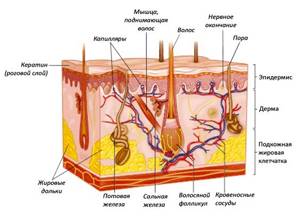
Cosmetological methods of influence
Long-term existence of grade 3-4 acne on the face leaves indelible marks. If subcutaneous atheromas and scars have formed on the skin, to give the skin a healthy appearance, you have to resort to the following types of treatment from a cosmetologist:
- laser polishing,
- fractional photothermolysis,
- medium chemical peeling,
- deep phenolic peeling,
- dermabrasion,
- injection mesotherapy,
- non-injection mesotherapy,
- ozone therapy,
- injection of fillers (intradermal fillers).

